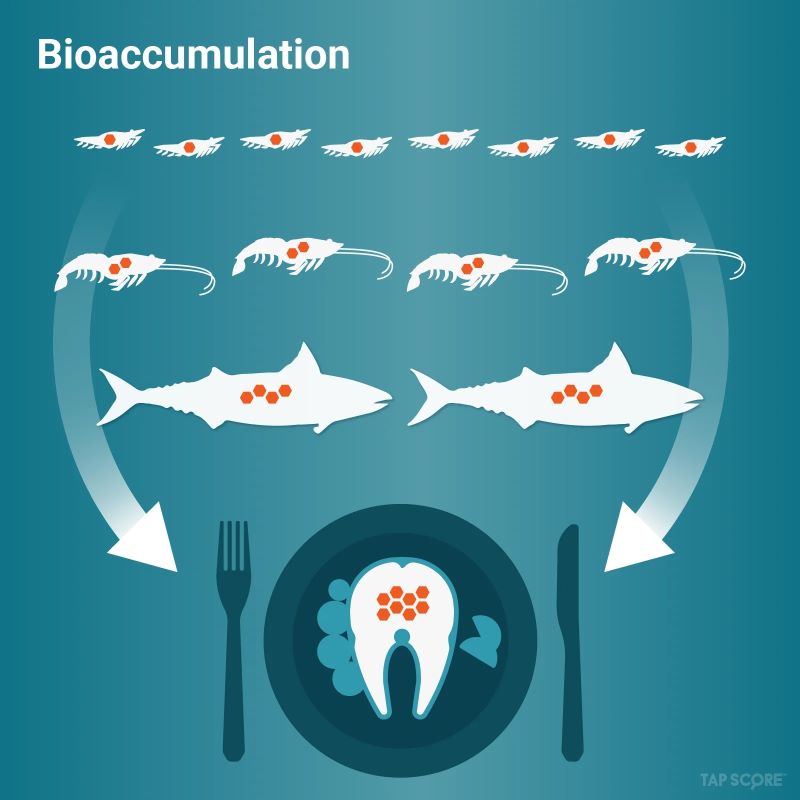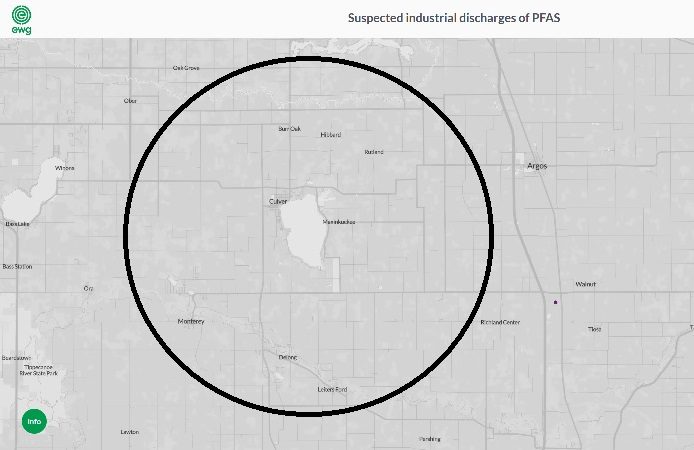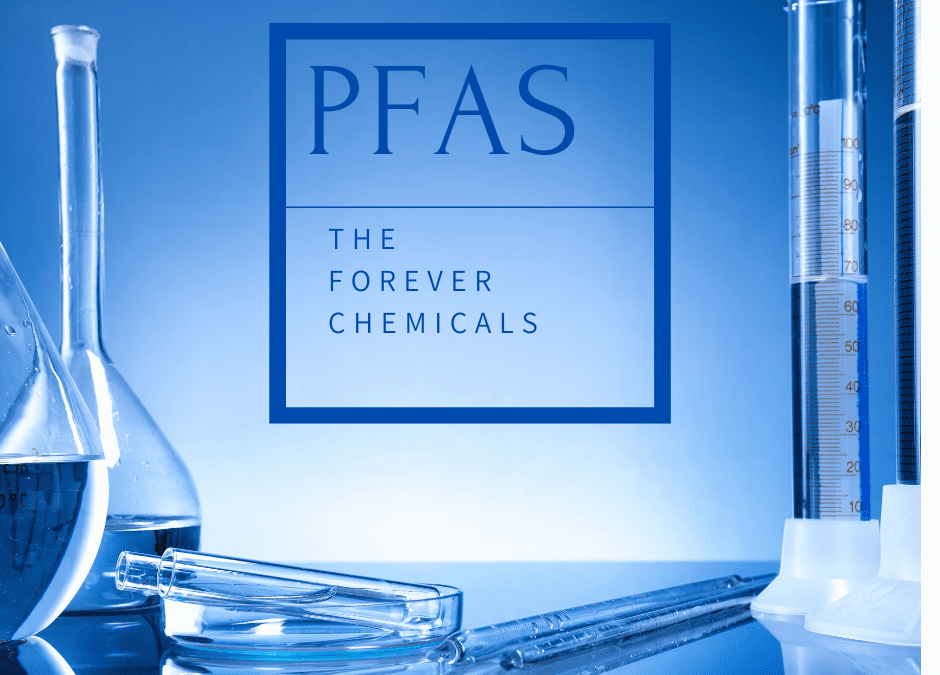Last week I attended the Michigan Department of Environment, Great Lakes and Energy (EGLE) 2023 Great Lakes PFAS Online Summit. I wanted to understand more about PFAS and if this is something LMEF should be concerned about for Lake Maxinkuckee.
Per- and polyfluoroalkyl substances (PFAS) are a diverse group of thousands of chemicals used in hundreds of types of products.
While there is a very specific chemical definition of PFAS, what’s important to know is that these substances have unique properties that make them heat-resistant, water repellent, and nearly indestructible. They have these properties because of the extremely strong and stable chemical bond formed between carbon and fluorine atoms, which is what makes them so useful.
However, the chemical bonds that hold them together “don’t break down” under normal circumstances, says Jamie DeWitt, Ph.D., an adjunct associate professor of biological sciences at North Carolina State University. Because of that, some people call these substances “forever chemicals.”
PFAS Are Everywhere

The FluoroCouncil, an industry group that represents companies that produce and use PFAS chemicals, describes them as “integral to modern life.” Because of their widespread use and their persistence in the environment, they can build up in water and soils. From there, they can be taken up by plants and animals. This can lead to bioaccumulation, where each creature in the food chain is taking in more and more of a chemical because they eat other exposed animals. Accumulation in food sources, especially freshwater fish, is an area of concern for human health.
PFAS are used in:
- Non-Stick Cookware
- Stain and Water-Resistant Fabrics
- Cosmetics
- Firefighting Foams
- Fast Food Packaging
- Electronics
- Wire and Cable
- Computer Chips
Go Ahead and Swim
Per an article from The Lilly Center for Lakes and Streams, PFAS exposure via water mainly occurs through drinking, not through the skin. While it is not recommended you drink lake water, that’s for many reasons other than PFAS! The good news is lake recreation is not currently an activity of concern for PFAS.
Limit Your Exposure
Because certain PFAS are known to cause risks to human health, the most important steps you and your family can take to protect yourself is to understand how to limit your exposure:
- Check your drinking water. “The most dangerous way that people are exposed to PFAS is through drinking water,” says Don Huber, director of product safety at Consumer Reports.
Indiana Department of Environmental Management (IDEM) conducted PFAS testing in 2022 of two drinking water sources in Culver; Culver Education Foundation and Culver Wastewater. Neither source showed any verified detections of PFAS. - Avoid eating fish from waterways impacted by PFAS. None of my research revealed any advisories regarding eating fish from Lake Maxinkuckee, but I don’t see anything that reflects any testing has been done.
This is what Indiana Department of Health says about the issue. - Minimize the use of stain-resistant fabric. It may be worth choosing clothing, carpet and furniture brands that don’t use stain-resistant or water-resistant coating on fabric.
Check out this website for a list of PFAS free products. PFAS-Free Products – PFAS Central - Beware of certain food packaging. Fast-food packaging and microwave popcorn bags often contain PFAS chemicals. Transfer food out of packaging as soon as you can and avoid reheating food in takeout containers, because both heat and time increase the likelihood of PFAS transferring from wrappers to food.
- Use non-stick pans correctly. Non-stick pans made with PFAS are less likely to release PFAS if they are used properly. That means don’t scrape them with metal cooking utensils or abrasive cleaners or overheat them when cooking. Or use pans made from ceramic or cast iron.
Conclusion
While I am certainly not an expert on the subject, my research indicated high levels of PFAS have been found in the water near:
- Fire Training Sites
- Industrial sites that were textile and leather processors, paper mills, metal finishers, wire manufacturers, plating facilities, aviation manufacturers
- Facilities using surfactants, resins, molds, plastics, and semiconductors
- Landfills
- Wastewater treatment sites
According to this map from Environmental Working Group of suspected industrial discharges, there are no potential sites near Culver or Lake Maxinkuckee.

It seems there is much to learn about PFAS. Explore these additional resources to learn more.
Purdue University Center for the Environment PFAS Factsheet

Hi, I’m Debbie Palmer. I received a BS in Horticulture from Purdue University. Here at LMEF, I am responsible for outreach presentations, monitoring the lake and it’s wetlands, project manager for restoration and research projects, and act as a community resource for all things related to the well-being of Lake Maxinkuckee and its surrounding watershed. I completed Indiana Watershed Leadership Academy, volunteer with the Indiana Clean Lakes Program, Hoosier River Watch and Marshall County Lakes and Waters and serve as a Board Member for Indiana Lakes Management Society.


Recent Comments